Polar Encyclopædia
THE CETACEANS
In the Valdes Peninsula, the right whale can be observed and up to the Falklands, Commerson's and Peron's dolphins. In the sub-Antarctic waters, depending on the chance of encounters, we could see 4 species of rorqual whales (minke whale, Rudolph's whale, fin whale, blue whale) and the humpback whale, 3 species of dolphins (short-finned dolphin, bottlenose dolphin), the sperm whale, and finally the killer whale up to the ice.
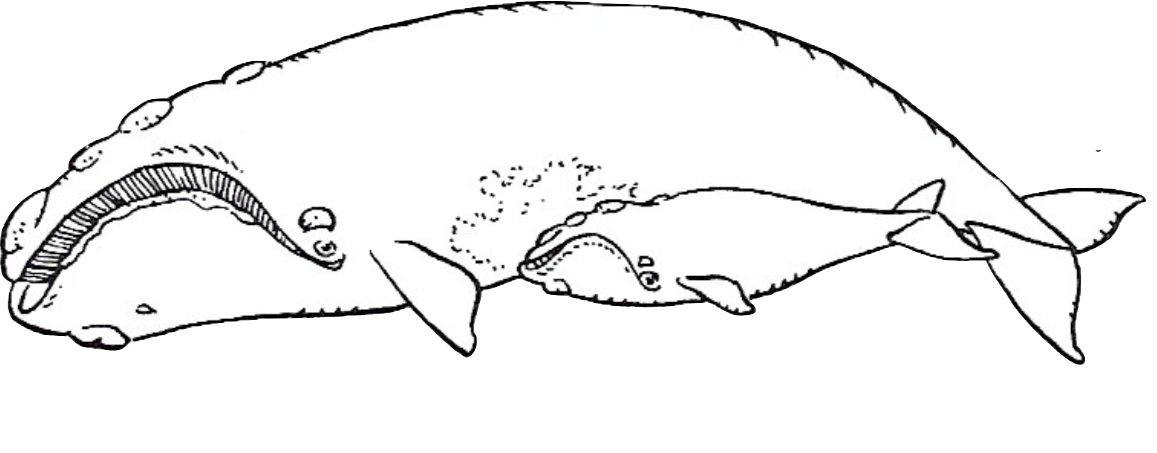
The right whale calf stays close to its mother to protect itself from orcas.
The order of Cetaceans
The order Cetacea includes species with teeth (Odontocetes) and species with baleen (Mysticetes), which also have a very narrow gullet. All have a horizontal caudal fin, and not a vertical one like fish.
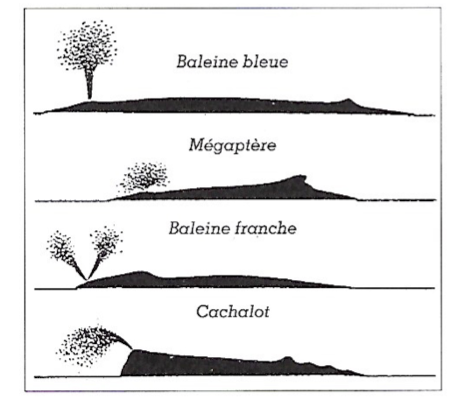
Like all mammals
Like all mammals, cetaceans are warm-blooded, breathe in the open air and nurse their young (twins are very rare); but totally adapted to aquatic life, they mate and give birth at sea. The skin, without fur, has been used as leather. However, some baleen whales have sensory hairs called fibrissae on the rostrum, with a function similar to cat hair. The head and thorax are often huge (up to 1/3 of the body length) and the fused cervicals limit lateral movement.
The whale's nostrils, called blowholes, have migrated upward on the head during evolution to allow them to conserve energy during ventilation while remaining upright. The circulatory system also evolved to allow them to dive to great depths: a slower heart rate during the dive (5 bpm while diving vs. 35 bpm at the surface), a very dense capillary blood network known as "admirable" which favours exchanges between arteries and veins, etc. If whales swim most often at shallow depths (less than 100 m), sperm whales dive up to 3200 m but dive more commonly around 400 m between 30 and 45 min to feed.
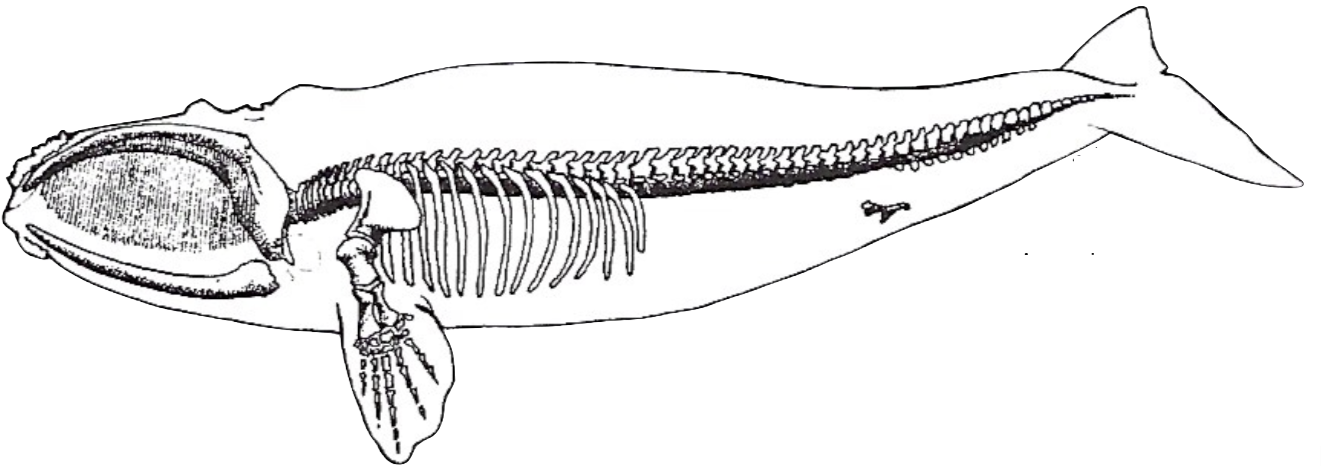
The skeleton of the right whale: the back legs have disappeared during evolution.
Fossils
Fossils of the oldest cetacean (Protocetus) come from Egypt and date from the Tertiary period. In the Eocene (about 35 million years ago), hind limbs and pelvis (pelvic girdle) have practically disappeared, because, unlike pinnipeds, the tail of cetaceans does not correspond to transformed legs, but to the simple fleshy and webbed end of the spine.

A. Baleen whales (Mysticetes)
- The Southern Right Whale (Eubalaena australis)
16 m long for 60 t, 2 blowholes.
Lips going up very high on the top of the head, covered with calluses specific to each individual and covered with cyamids, small crustaceans that parasitize whale lice. No dorsal fin. Feeds on planktonic crustaceans (copepods, krill) and small fish.
7000 individuals in 2020
IUCN Status (12/2017): Least Concern.
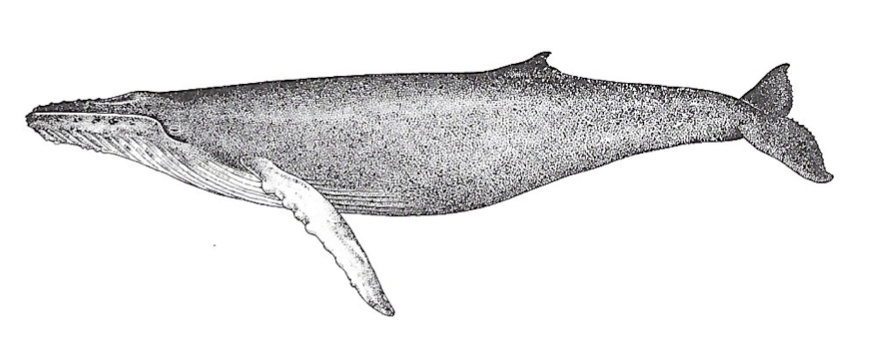
- Humpback whale (Megaptera novaeangliae)
Up to 16 m for 75 t.
Very long pectoral fins covered, like the head, with tubercles, containing a sensory hair. Its name comes from the hump formed by its camber during its ventilation on the surface. Ventral grooves. Feeds on krill and small fish.
95 000 individuals
UCN Status (03/2018): Least Concern.

- Blue whale (Balaenoptera musculus)
The largest animal of all time: up to 33 m for 180 t!
To be compared to the minke whale of 8 m for 7 t (B. acutorostrata ). Feeds on krill near the ice pack.
Between 10,000 and 15,000 individuals.
IUCN Status (03/2018): Endangered

- Fin whale (Balaenoptera physalus)
24 m and 90 t.
Long dorsal crest "in razor". Although very fast (peaks at 20 knots, 36 km/h), it is less efficient than the Rudolph's whale (B. borealis) which reaches 26 knots, 48 km/h.
140,000 individuals
IUCN Status (02/2018): Vulnerable

- Antarctic minke whale (Balaenoptera bonaerensis)
Measures between 7.2 and 10.7 m for a weight of 5.8 to 9.1 t.
Its unstriped fins, pointed rostrum and relatively small size identify the Antarctic minke whale. Dark gray dorsally and white ventrally, with grayish streaks and/or lobes on the lateral surface.
IUCN Status (01/2018): Near Threatened

B. Tooth whales (Odontocetes)
- Sperm whale (Physeter macrocephalus)
Up to 18 m and 70 t.
It is the largest toothed cetacean. The difference is very marked between male and female: they weigh almost 3x more than they do! Small lower jaw, under a huge square head (oily reserve - spermaceti - "adjustable" when diving like a ballast). Series of undulations on the back.
About 360 000 individuals
IUCN Status (06/2018): Vulnerable
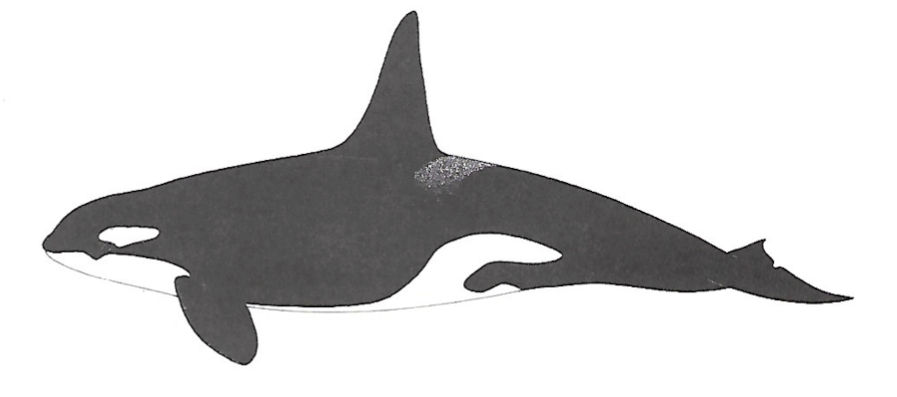
- Killer whale (Orcinus orca)
Up to 9.8 m and 10 t for males and 8.5 m and 7 t for females.
Black with white belly, with a white spot above the eyes. High and straight dorsal fin.
Large mouth decorated with a dozen pairs of pointed teeth.
In reality, relatively rare but easily spotted, therefore often reported.
Number of individuals and IUCN status: lack of data.
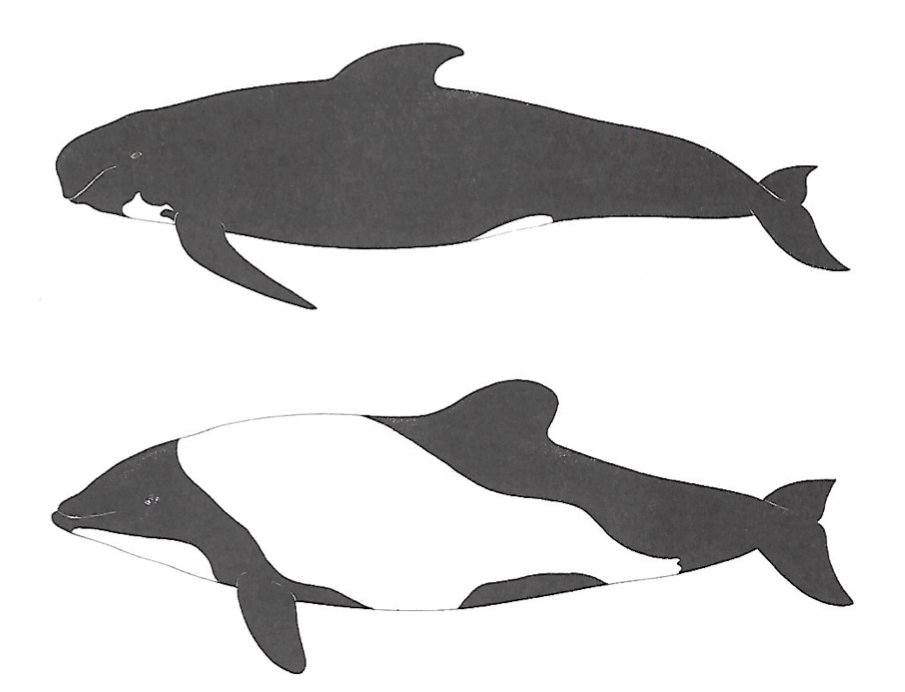
Many dolphins live in the southern waters,
- from the largest,
the short-finned pilot whale (Globicephala melaena) which reaches 7 m,
IUCN Status (06/2018): Least Concern - to the smallest,
the human-sized commerson's dolphin (Cephalorhynchus commersonii).
IUCN Status (08/2017): Least Concern
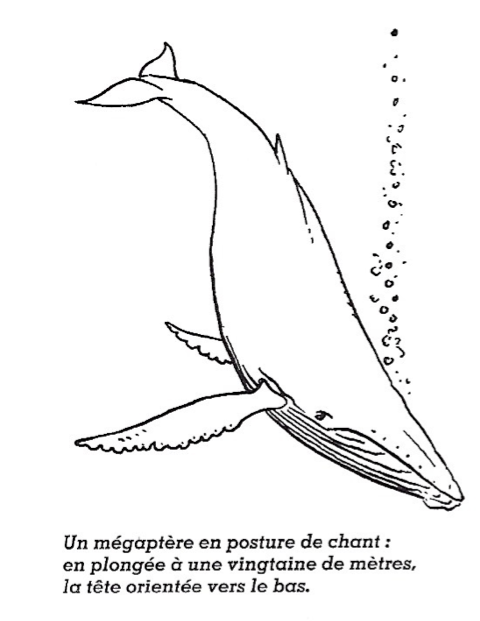
DID YOU KNOW?
Two types of food, for two types of mouths.
Toothed whales feed mainly on squid and fish, except for the killer whale which prefers warm-blooded animals (penguins, seals); baleen whales filter huge quantities of water, retaining plankton (like krill) and small fish. Each cetacean has developed its own method of capture: the blue whale's big gulp of water, the right whale's surface skimming, the humpback's or megapter's curtain of bubbles, the sperm whale's and squid's fights, and the orca's attacks in formation.
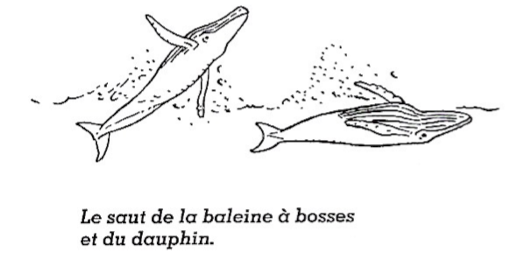
To communicate among themselves, the whales, although lacking vocal cords, nevertheless make long complex songs whose range can reach several hundred kilometers. Some calls seem to evoke the gathering, the rut or the aggressiveness; others remain without explanation. In toothed whales in particular, clicks, more than sight, are used to locate themselves (echolocation). It also seems that whales have, in general, a propensity to play. It is thought that the jumps out of the water of right whales and megapteres serve as a mode of sound communication, a demonstration of power between males, or as a game for the young and allows them to remove parasites.
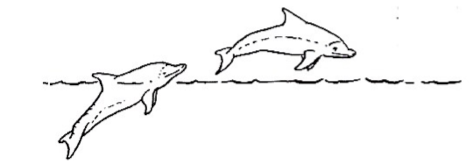
How do marine mammals sleep? Research shows that, while seals sleep in fits and starts between two "awakenings" necessary for their breathing, dolphins seem to be deprived of REM sleep and only let one cerebral hemisphere rest at a time.
Long hunted, whales are now protected. Some species were on the verge of extinction.
Support the project with a donation
The Polar POD expedition is one of the stamp of the pioners, a human adventure coupled with a technological challenge, an oceanographic exploration never before carried out which will mark a milestone in the discovery of the oceans.
Thank you for your support !